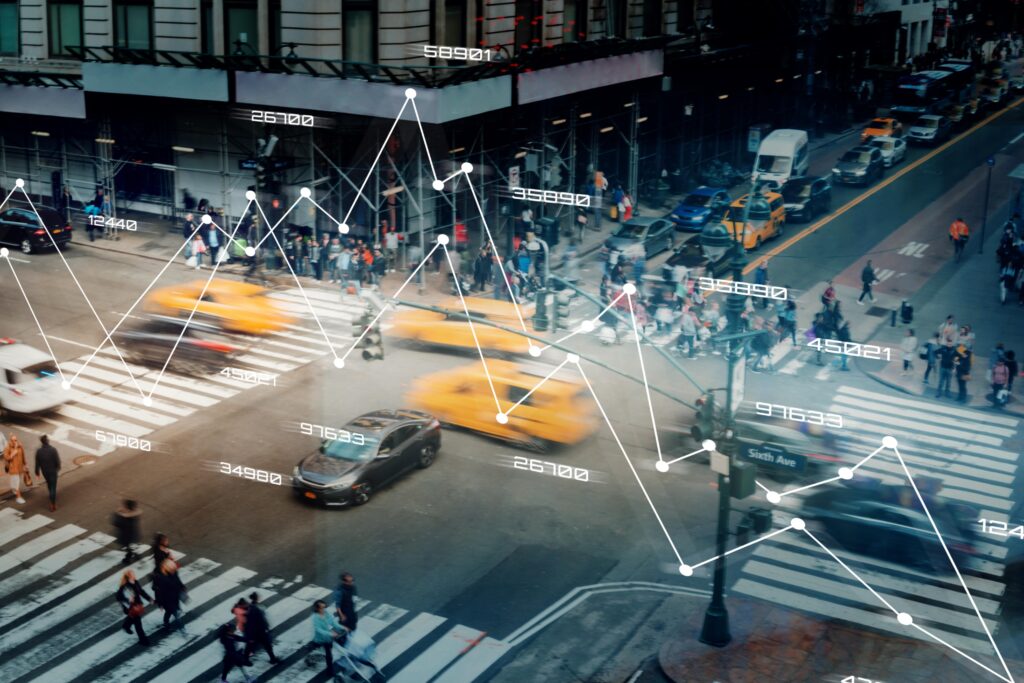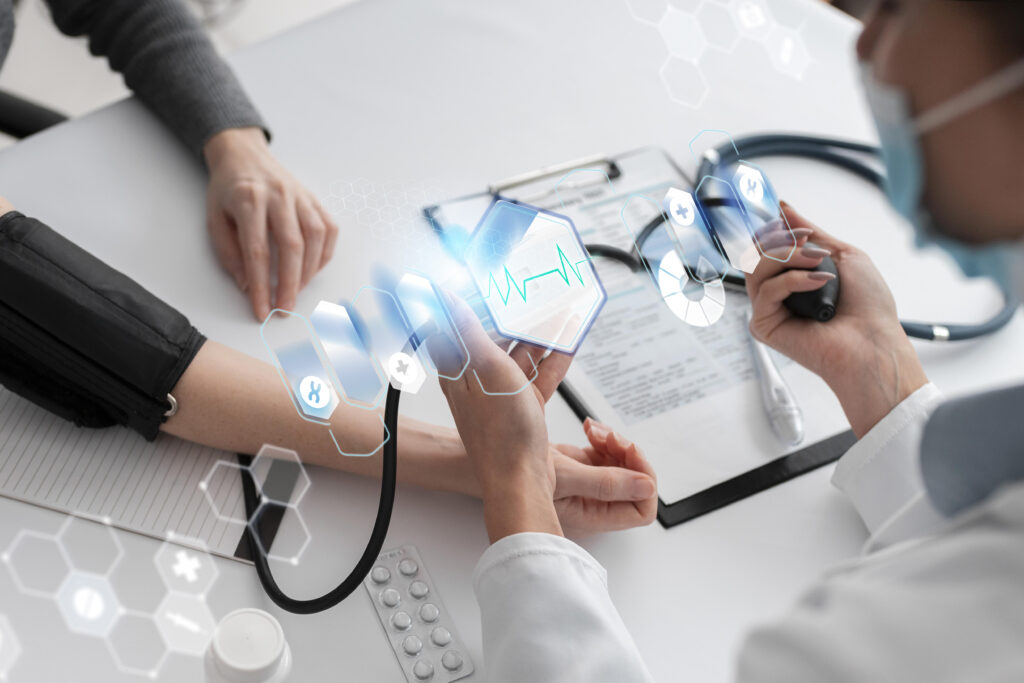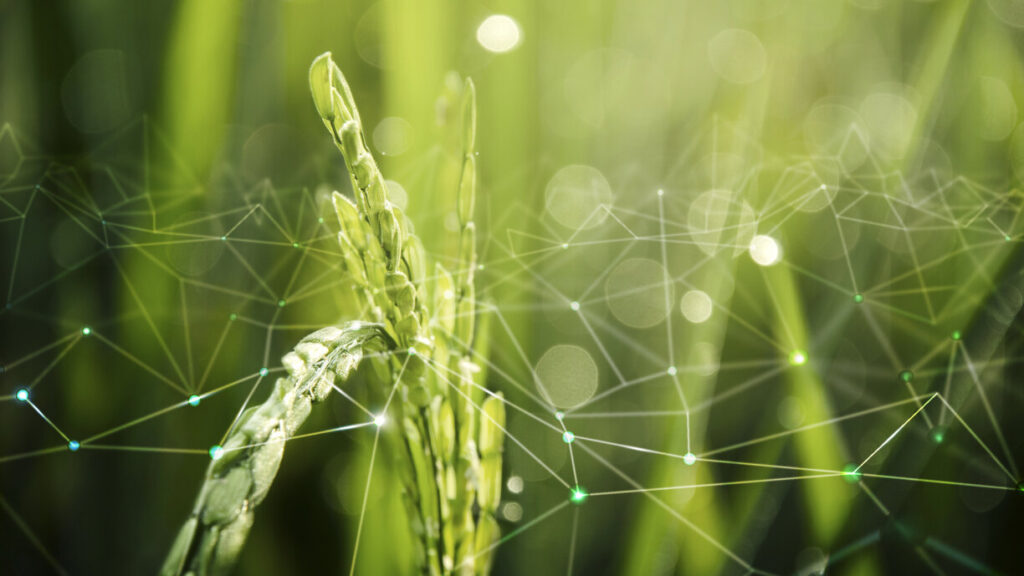Potential Use of IoT Applications in Healthcare, Traffic and Agriculture
The Internet of Things (IoT) is transforming various sectors by interconnecting devices and enabling real-time data collection and analysis. From smart traffic management systems to innovative healthcare solutions and precision agriculture, IoT applications are revolutionizing the way we live and work. For a software development company, the opportunities in IoT are vast, offering numerous avenues for creating intelligent and efficient systems. This blog delves into the potential use of IoT applications in healthcare, traffic, healthcare and agriculture, highlighting the advancements, benefits, and real-world examples in each sector.
IoT in Traffic Management
Enhancing Traffic Flow and Safety
IoT applications in traffic management aim to reduce congestion, improve safety, and optimize transportation networks. Smart traffic lights, connected vehicles, and real-time traffic monitoring systems are some of the key innovations.
Smart Traffic Lights
Smart traffic lights adjust their timing based on real-time traffic conditions. According to a study by the Institute of Transportation Engineers, implementing smart traffic lights can reduce traffic delays by up to 40% and emissions by 21%. These systems use sensors and cameras to collect data on vehicle flow and adjust signals to optimize traffic movement.
In addition to reducing delays, smart traffic lights contribute to energy savings and lower greenhouse gas emissions by minimizing idle times and stop-and-go driving. For instance, a pilot project in Los Angeles demonstrated a 12% reduction in fuel consumption and a 15% decrease in travel time after deploying smart traffic lights at key intersections.
Connected Vehicles
Connected vehicles communicate with each other and with traffic infrastructure to enhance road safety and efficiency. According to the National Highway Traffic Safety Administration (NHTSA), vehicle-to-everything (V2X) technology can prevent up to 80% of non-impaired crashes. This technology allows vehicles to share information about speed, location, and road conditions, enabling them to avoid collisions and respond to hazards more effectively.
Moreover, connected vehicles can provide drivers with real-time updates on traffic conditions, road closures, and weather alerts, allowing for better route planning and reduced travel times. In a study conducted by the European Commission, the deployment of connected vehicle technology was projected to reduce traffic accidents by 30% and save billions in associated costs.
Real-World Example: Amsterdam’s Smart Traffic Management
Amsterdam’s smart traffic management system integrates data from connected vehicles, traffic cameras, and sensors across the city. This system has reduced travel time by 10% and improved emergency response times by 25%. The city’s use of IoT in traffic management serves as a model for other urban areas seeking to enhance their transportation networks.
Amsterdam’s system also includes smart parking solutions that help drivers find available parking spaces quickly, reducing the time spent searching for parking and further alleviating traffic congestion. The integration of IoT in Amsterdam’s traffic management has not only improved mobility but also contributed to a cleaner and more sustainable urban environment.
IoT Applications in Healthcare
Improving Patient Care and Operational Efficiency
IoT applications in healthcare are transforming patient care, streamlining hospital operations, and enabling remote health monitoring. A software development company specializing in IoT can create solutions that enhance healthcare delivery and patient outcomes.
Remote Patient Monitoring
Remote patient monitoring (RPM) uses IoT devices to track patients’ vital signs and health metrics from their homes. According to a report by Grand View Research, the global RPM market is expected to reach $2.14 billion by 2025, growing at a CAGR of 38.5%. RPM reduces hospital readmissions, lowers healthcare costs, and improves patient outcomes.
RPM devices, such as wearable sensors and smart home devices, collect data on parameters like blood pressure, heart rate, and glucose levels, transmitting this information to healthcare providers for continuous monitoring. This allows for early detection of potential health issues and timely interventions, improving patient outcomes and reducing the need for hospital visits.
Smart Medical Devices
Smart medical devices, such as insulin pumps and pacemakers, can adjust treatment based on real-time data. These devices improve the quality of care and patient safety. For instance, a study published in the Journal of Diabetes Science and Technology found that smart insulin pumps reduced hypoglycemic events by 32% compared to traditional pumps.
In addition to insulin pumps, smart inhalers for asthma patients and connected drug delivery systems for chronic disease management are examples of how IoT is enhancing patient care. These devices ensure accurate dosing, track medication adherence, and provide valuable data for personalized treatment plans.
Real-World Example: Cleveland Clinic’s IoT Integration
Cleveland Clinic has integrated IoT solutions to enhance patient care and hospital operations. Their use of IoT-enabled devices for patient monitoring has improved care coordination and reduced hospital readmissions by 20%. This integration demonstrates the significant impact of IoT applications in healthcare.
Cleveland Clinic’s IoT initiatives also include smart beds that monitor patient movement and adjust settings for optimal comfort, as well as IoT-enabled asset tracking systems that ensure the availability and maintenance of critical medical equipment. These innovations have streamlined hospital workflows, reduced costs, and enhanced the overall patient experience.
IoT in Agriculture
Enhancing Productivity and Sustainability
IoT applications in agriculture, also known as smart farming, leverage technology to increase crop yields, reduce waste, and promote sustainable practices. Precision agriculture, livestock monitoring, and automated irrigation systems are key areas of innovation.
Precision Agriculture
Precision agriculture uses IoT sensors to monitor soil conditions, weather patterns, and crop health. According to the Food and Agriculture Organization (FAO), precision agriculture can increase crop yields by up to 30% and reduce the use of water, fertilizers, and pesticides by 20%. These sensors provide farmers with data to make informed decisions about planting, irrigation, and harvesting.
For example, soil moisture sensors can detect when crops need watering, optimizing water usage and preventing over-irrigation. Similarly, drones equipped with multispectral cameras can assess crop health and identify areas affected by pests or diseases, allowing for targeted treatments and reducing the use of chemical inputs.
Livestock Monitoring
IoT devices monitor livestock health and behavior, enabling farmers to detect illnesses early and optimize feeding practices. A study by MarketsandMarkets estimates that the livestock monitoring market will grow to $2.5 billion by 2023, driven by the adoption of IoT technologies.
Wearable sensors on livestock can track vital signs, activity levels, and feeding patterns, alerting farmers to any abnormalities that may indicate health issues. This early detection helps prevent the spread of diseases, reduces veterinary costs, and improves overall animal welfare.
Real-World Example: John Deere’s Precision Agriculture Solutions
John Deere has developed a suite of IoT-enabled precision agriculture solutions that help farmers optimize their operations. Their connected tractors and equipment provide real-time data on field conditions, leading to increased efficiency and productivity. John Deere’s innovations in IoT for agriculture exemplify the potential of smart farming technologies.
John Deere’s platform integrates data from multiple sources, including weather forecasts, soil sensors, and satellite imagery, providing farmers with actionable insights to make informed decisions. This comprehensive approach to precision agriculture has led to significant improvements in crop yields, resource management, and sustainability.
Challenges and Future Directions
Addressing Security and Privacy Concerns
While IoT applications offer numerous benefits, they also pose challenges related to security and privacy. Ensuring the protection of sensitive data and preventing unauthorized access to IoT devices are critical concerns. A software development company must prioritize robust security measures to safeguard IoT systems.
Interoperability and Standardization
Interoperability and standardization are essential for the widespread adoption of IoT technologies. Devices from different manufacturers must be able to communicate seamlessly. Industry standards and protocols are necessary to ensure compatibility and integration across IoT ecosystems.
The development of common standards, such as the Internet Engineering Task Force’s (IETF) CoAP (Constrained Application Protocol) for IoT devices, is crucial for enabling interoperability. These standards facilitate the integration of diverse IoT devices and platforms, promoting a more cohesive and efficient IoT environment.
Future Trends
The future of IoT applications looks promising, with advancements in artificial intelligence (AI), machine learning, and 5G connectivity set to enhance IoT capabilities. AI-driven analytics will enable more accurate predictions and insights, while 5G will provide the high-speed, low-latency connections needed for real-time IoT applications.
AI-powered IoT solutions can analyze vast amounts of data to identify patterns, predict outcomes, and automate decision-making processes. For example, predictive maintenance systems in manufacturing can use AI to anticipate equipment failures and schedule repairs, reducing downtime and operational costs.
Additionally, the deployment of 5G networks will enable the proliferation of IoT devices and support applications requiring real-time data transmission, such as autonomous vehicles and remote surgery. The combination of AI, IoT, and 5G is expected to drive innovation across various industries, unlocking new possibilities for efficiency and automation.
Conclusion
IoT applications are transforming traffic management, healthcare, and agriculture, offering significant benefits in terms of efficiency, safety, and sustainability. For a software development company, the opportunities in IoT are immense, providing avenues to innovate and create impactful solutions. By addressing challenges related to security, privacy, and interoperability, the potential of IoT can be fully realized.
Savvycom is a leading software development company specializing in IoT solutions that drive innovation and efficiency. With a focus on delivering cutting-edge technology, Savvycom helps businesses across various sectors leverage the power of IoT to achieve their goals. Our expertise in IoT applications ensures that our clients benefit from the latest advancements, whether in traffic management, healthcare, or agriculture. Contact us today to learn how we can help you harness the potential of IoT.
By exploring the diverse applications of IoT in traffic, healthcare, and agriculture, it’s clear that these technologies hold the promise to revolutionize industries, enhance quality of life, and drive sustainable practices. With continued innovation and strategic implementation, IoT will undoubtedly play a pivotal role in shaping the future.
Tech Consulting, End-to-End Product Development, Cloud & DevOps Service! Since 2009, Savvycom has been harnessing digital technologies for the benefit of businesses, mid and large enterprises, and startups across the variety of industries. We can help you to build high-quality software solutions and products as well as deliver a wide range of related professional software development services.
Savvycom is right where you need. Contact us now for further consultation:
- Phone: +84 24 3202 9222
- Hotline: +1 408 663 8600 (US); +612 8006 1349 (AUS); +84 32 675 2886 (VN)
- Email: [email protected]





